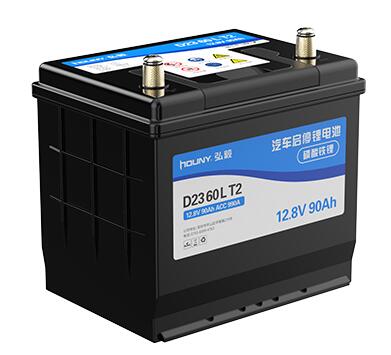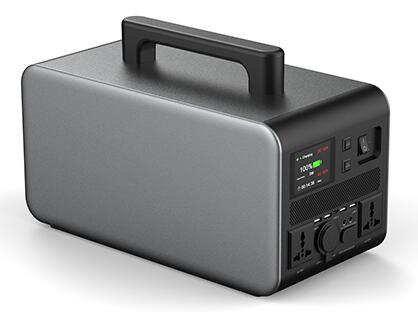The Stop-Start System is a low-cost method for increasing fuel economy and decreasing emissions. The system turns off the internal combustion engine when the vehicle stops at a stoplight or during stop-and-go traffific where the vehicle would normally idle for a minimum of three to fifive seconds. BBC published an article on how UK rush hour drivers spent an average of 74 hours stuck in traffific in 2017. In reality, this is the case all around the globe—experiencing heavy traffific on a daily basis. To simplify the stop-start system is where the engine shuts down but other components continue to run such as the air conditioning system, power steering, brakes, sound system, etc.
Start-stop systems have been popular in Europe since the 1980s, but have only recently been introduced to the U.S. market. Audi, BMW, Chrysler, Daimler, Fiat, Ford, General Motors, Honda, Hyundai/Kia, Jaguar, Land Rover, Mazda, Nissan, PSA Peugeot, Citroën, Renault, Toyota, Volkswagen, and Volvo now offer models with start/stop systems in the U.S. The
popularity of these systems will likely continue to increase due to pressure to comply with corporate average fuel economy (CAFE) standards that currently target an average of 54.5 mpg by 2025.

More than 70 percent of all new cars are equipped with a start-stop function. The aim of the automotive industry is to further reduce fuel consumption and, in doing so, reduce emissions. Particularly, it needs higher demands on the car battery. Therefore, more power and higher cycle stability are required. When the vehicle is stationary, the battery must provide the energy for the increased number of engine starts and the electrical loads in the car.
Car users around the world have been using lead-acid batteries to start cars. Lead-acid batteries are commonly found in motor vehicles, battery backup systems and other electrical applications where a rechargeable battery is required. Lead-acid batteries are generally reliable for everyday use; however, these batteries do have their shortcomings. It is important to be aware of the dangers and disadvantages of lead-acid batteries before including one in your electrical circuit.
In a research made by University of Wisconsin in September 2010 on Lead Acid Battery Maintenance and Safety Protocol, they noted that there's massive dangers from chemical burns in using lead-acid batteries since the electrolyte in a typical lead-acid battery is made up of approximately 36 percent sulfuric acid and 64 percent water. Furthermore, when a lead-acid battery is recharged, some of the electrolyte may evaporate and hydrogen gas will leak from the battery cell vents. Hydrogen gas is flflammable and could be the source of a fifire
outbreak. Lead-acid Batteries are also equipped with lead oxide electrode plates immersed in an acidic electrolyte and an automotive lead-acid battery can weigh between 30 and 60 pounds thus lifting a lead-acid battery inappropriately can cause serious injury.
Lithium iron phosphate batteries (LiFePO4 or LFP) offer lots of benefifits compared to lead-acid batteries and other lithium batteries. Longer life span, no maintenance, extremely safe, lightweight, improved discharge and charge effificiency, just to name a few.
LiFePO4 batteries are not the cheapest in the market, but due to a long life span and zero maintenance, it’s the best investment you can make over time.
HOUNY has specififically developed and launched a series of car start-stop batteries that use automotive-grade lithium iron phosphate batteries and a built-in intelligent battery management system (BMS).

The cycle life of lead-acid batteries is generally 250 to 300 times and the average lifetime of lead-acid batteries is just two years. Whereas the cycle life of lithium iron phosphate batteries is about 3000 times. If the vehicle is parked for a long time without starting, the battery of the car will be exhausted and the lead-acid battery will be scrapped but lithium iron phosphate battery can still be used normally after being charged without affecting its life.
Lithium iron phosphate batteries (LiFePO4) offer high power density which causes lithium batteries to be relatively small and light. The capacity of the same volume of lithium iron phosphate is 50% more than that of lead acid, and the weight of the same volume of lithium iron phosphate is 70% less than the weight of lead acid. The reduced weight allows the car to accelerate faster and consume less fuel. Compared to lead-acid batteries lithium provides great energy density and is at least half the mass. Choose lithium if you want to reduce concerns about battery weight and size.
HOUNY lithium iron phosphate batteries (LiFePO4) have 100% of their capacity available. Additionally, their fast charge and discharge rates cause them to be a great fit for all sorts of applications. Fast charging reduces any downtime and increases efficiency. High discharge pulse currents deliver bursts of power in a short amount of time. The internal resistance of the battery is low, the output current is large and the ignition speed is fast. The peak horsepower is increased by about 4.5%, and the peak torque is increased by about 3%. Lithium iron phosphate batteries reduce fuel consumption by 5% compared to lead-acid batteries.
The built-in intelligence BME (Battery Management System) has multiple protection functions such as overcharge, overdischarge, overcurrent, overvoltage, overtemperature, overload, short circuit protection, etc., to avoid battery damage.
The peak value of HOUNY lithium iron phosphate electric heating can reach 350℃~500℃. Lithium manganate and lithium borate are around 200°C. The operating temperature range of lithium iron phosphate is -20℃~80℃. The operating temperature range of lead-acid batteries is -20°C~50°C which makes lithium batteries a good fit for various applications, including ones that undergo extreme temperatures. Lithium is the best option for applications that will exhaust the batteries or run in extreme weather conditions.
The battery has low internal resistance and high transient output power, which fully meets the demanding requirements for instantaneous high-current power supply when the speaker is in large dynamics, making the mid-bass sound thicker and the treble more transparent.
HOUNY Lithium iron phosphate batteries do not contain heavy metals and rare metals which are non-toxic, non-polluting, and comply with European RoHS regulations. Used batteries can be recycled, refined and reused.
For a more in-depth analysis on the differences and advantages of lithium Iron Phosphate vs. Lithium-Ion. Read here.
For more inquiries:
Website: www.hounypower.com
Telephone: +86 755 8399 4783
Email: market@houny.cn
Mobile: +86 138 2313 0291
Copyright © Shenzhen Houny Battery Co., Ltd. All Rights Reserved | Sitemap | Technical Support:
